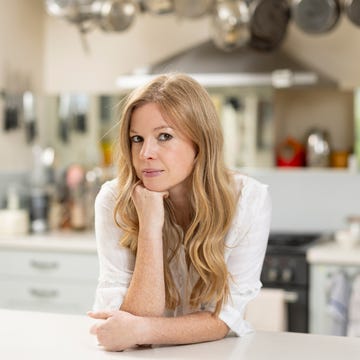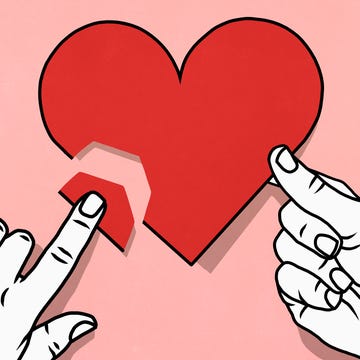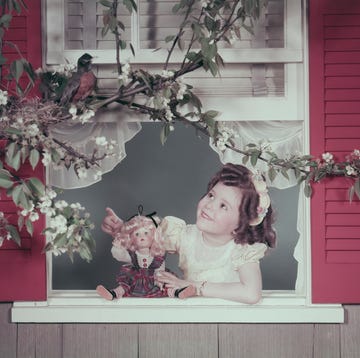Last week, the Woodland Trust released a report on the state of the UK’s forests. The headline figure was sobering: only 7% of our native woodlands are in what’s deemed ‘good ecological condition’. The rest? Fragmented, degraded, overrun by invasive species, under siege from pollution and development. It was the kind of story you might skim while scrolling on your phone, perhaps with a passing twinge of guilt.
But I couldn’t move on from it. I felt it deep in my gut. Because five years ago, in the early days of the pandemic, it was the trees – quite literally – that saved me.
It was March 2020. Boris Johnson had just announced the first national lockdown. I was in my final year at university, nursing dreams of postgrad travel and the kind of freedom I had no idea how to use yet. On paper, I was one of the lucky ones – I had a family who loved me, a safe home, food in the fridge. But emotionally, I was sinking.
What to read next
I couldn’t get out of bed. I sat at my desk with my dissertation open and stared at it like it was written in another language. Every day was thick with a kind of numb fog. The world had paused – and inside, I had, too.
My family and friends would say things like ‘you don’t seem yourself’. But the truth is, what the lockdown did was allow the mask to drop. I no longer had to pretend. Perhaps for the first time, I was precisely myself. That was the horror of it. There was no energy left for the tidy smiles and jokes – just enough to go through the motions. I reached a point where I couldn’t see a reason to exist beyond it hurting my family not to.
The only thing we were officially allowed to do outside of the house was go for one daily walk or exercise. I used to take mine in the afternoon just when the heat of the day was dying. My parents live in a leafy suburb of London, not too far from the river, and I would take my rationed hour in the afternoon along the towpath. Those walks became a lifeline.
I didn’t have to explain myself to anyone, least of all a patch of birch or a hedgerow. The quiet repetition of walking beneath leaves did something to me. I started to find reasons to live for myself. Not a grand, life-changing revelation. Just the next hour. The next step through the dappled light from the trees lining the walk.
As luck would have it, a friend’s mum had started a charity called Dose Of Nature. The idea was deceptively simple: prescribe time in nature for people struggling with their mental health. It was evidence-based therapy prescribed by GPs. I knew I wanted to be involved, so I rang up and started volunteering that winter.
It turned out there was a growing field of research behind all of it. In the 1980s, an American researcher, Roger Ulrich, studied hospital patients recovering from surgery. Some had views of trees; others stared out at a brick wall. The tree-watchers recovered faster and needed less pain medication. That was just the beginning. Since then, countless studies have linked exposure to nature with reduced anxiety, better sleep, boosted immune systems – even higher levels of life satisfaction.
There are also things called phytoncides – compounds released by trees to defend against insects and disease. We breathe them in whenever we walk past trees. They lower our stress hormones, calming our nervous systems. They’re strongest in evergreens – such as pine, cedar or fir – but even your average urban shrub has something to offer.
None of this had a name for me at the time. I’d been self-medicating without knowing it. I just knew I felt better when I was in nature and that I was lucky to live near somewhere I could enjoy it.
These days, I live in a small flat in London and I work in an office block in the West End. You might think the nature fix would be harder to come by. But I’ve found a pocket of it on a side street, wedged between the restaurants and offices. Dozens of pots line the pavement outside a tiny row of residential houses – tomato plants, herbs, small trees. I go there on my lunch break. I take a minute for myself and just watch things grow. I don’t know what half of them are. It doesn’t matter.
I still have off days – when everything feels a little dulled around the edges, like sound muffled by cotton wool. But now I know how to move through them. I go outside. I pay attention. I breathe.
So when I read about the decline of our woodlands, it didn’t feel abstract. It felt personal. I owe something to those trees – and I suspect I’m not the only one.
We talk a lot about mental health now – how we manage it, how to talk about it, how to seek help. But sometimes, the help we need isn’t on a screen or in a self-help book. Sometimes it’s down a path, under a canopy of green, in the stillness of a place that has been quietly growing for centuries.
We don’t need to save the trees just because they’re beautiful or ancient or essential to the planet’s survival (though they are all of those things). We need to save them because, sometimes, they save us.














